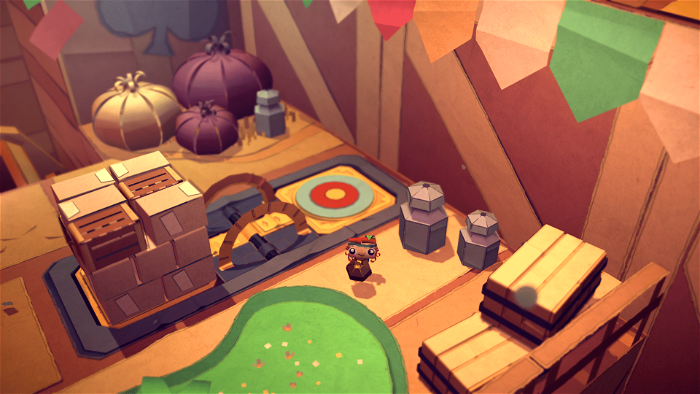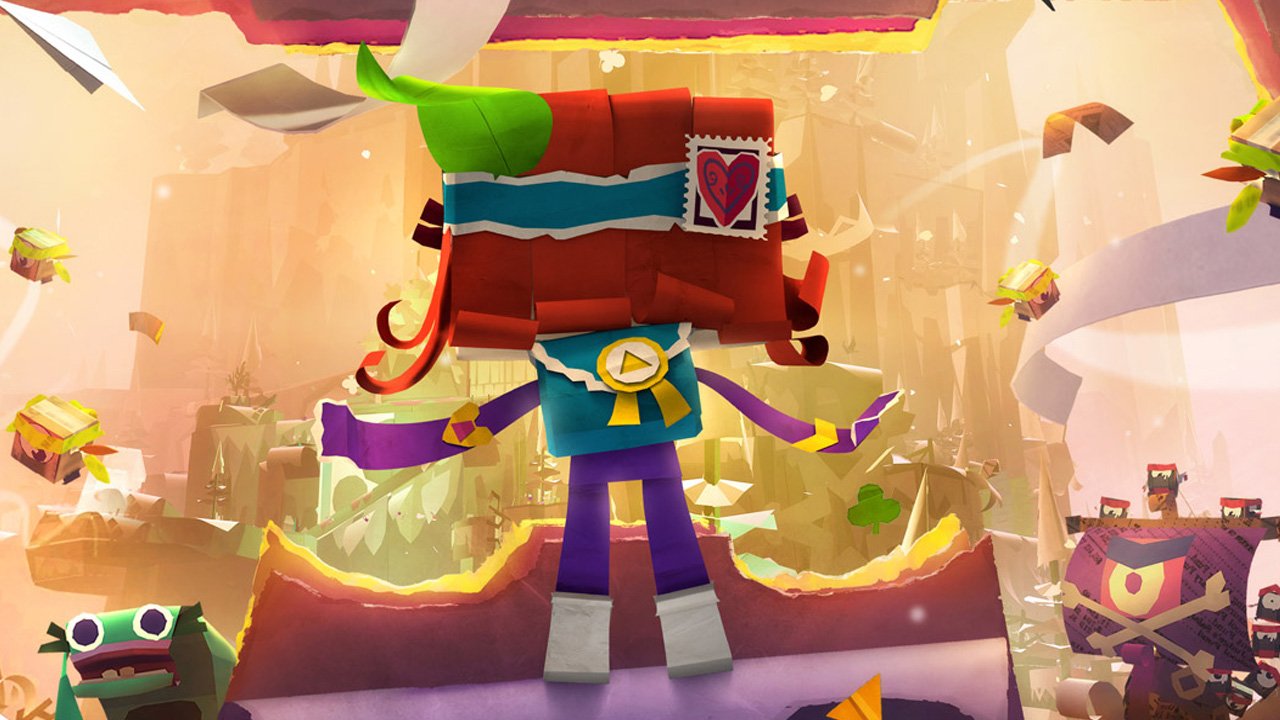Tearaway is still a great game on the PlayStation 4. I wasn’t really expecting this to be the case, given how completely Media Molecule’s original release was tailored to the Vita’s hardware. In the initial 2013 version, Tearaway was a game that asked the player to pretend that the portable console was a gateway to a strange little paper craft world. Pressing the Vita’s back touch pad sent the player’s fingers flying up through the world; scenes where the main character looked up to the heavens used the system’s camera to show the player’s actual face beaming down on the game world. Media Molecule’s clever integration of hardware features into Tearaway’s story and digital setting made it a striking experience.

Moving a title so deeply tied to the system for which it was developed to a different console doesn’t seem like a good idea. Before playing it, I assumed Tearaway Unfolded would be a lesser version of the original for this reason. But, even as the game shifts from portable console to TV screen, it finds ways to maintain its original spirit. Despite losing the tactile nature of the Vita’s control scheme, Tearaway’s PS4 version continues to remind players that the game they play is governed by their manipulation of physical objects.
The original Vita release was all about blurring the line between digital and analogue interaction. Poking the actual physical console or taking a photo of the player’s real-world environment would alter the game in significant ways. In the PS4 version’s case, this same effect is accomplished by cleverly embracing the unique design of the controller and making reference to the TV screen its characters “live” inside. Tearaway’s little envelope protagonist—named either Iota or Atoi—still reacts to the player’s gestures and movements. Platforms move about the world as the controller’s accelerometer picks up movement. A gust of wind can be summoned by swiping the touch pad. Bright light guides Iota/Atoi through dark areas when the player shines their controller’s sensor bar to create an illuminated path.
Because Media Molecule and co-developer Tarsier Studios have essentially re-built Tearaway for the PlayStation 4 (rather than simply shoehorn its old systems into a different console’s feature set) the game remains engaging as a physical experience, unlike many that have come before. The effect is reminiscent of the very best motion games from the previous console generation. But it’s distinguished by the surprising restraint shown by the developers. Rather than shoehorn unnecessary touch or motion controls into every aspect of its design, Tearaway uses these systems as flourishes meant only to remind the player of their influence over the game world.
A few years on from the novelty of the Wii’s motion controllers and the Kinect’s body sensors, it’s easier to take a step back and reconsider how well a developer can integrate our real world into their digital one. Tearaway, though it very much follows in the tradition of exploration-heavy platformers like Mario 64, is indebted to the early days of these motion sensors. In blurring the line between the physical and virtual, it shows that a tasteful, properly considered use of these features is capable of subtly enriching an experience. And in doing so, what Tearaway demonstrates is that there is still mileage left in designing games based around the player’s physical input.

Though motion controls have largely been forgotten (or turned into ancillary parts of other technology, like the new virtual reality headsets), that doesn’t mean their potential has been exhausted. The runaway success of Nintendo’s Wii had the unfortunate effect of attracting sloppily-made titles that swamped the system’s best games. Though a handful of games (largely created by Nintendo itself) made great use of motion controls, the Wii’s legacy was tarnished by the sheer volume of less worthwhile experiences. Mainstream videogames have largely abandoned the potential of physical play because of the negative impression this caused.
Now, with the benefit of hindsight, it’s easier to see that the nearly complete dismissal of motion controls was a bit premature. Games like Tearaway and Tearaway Unfolded show that a developer willing to properly consider how these features can be used, not as a gimmick but as a cornerstone of a game’s design, can create something fairly remarkable.
Watch our Let’s Play of Tearaway Unfolded.




